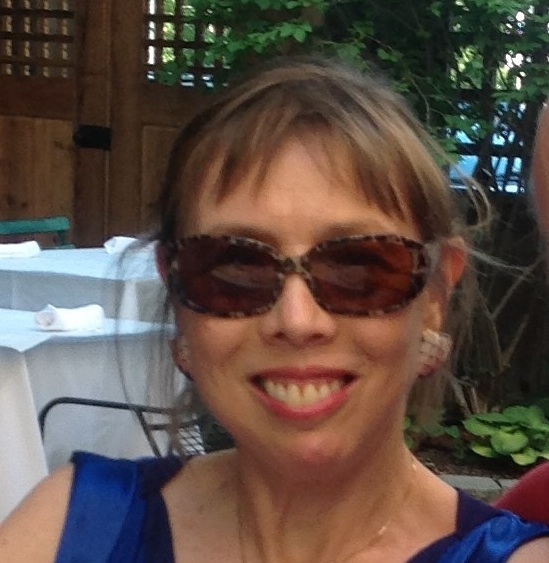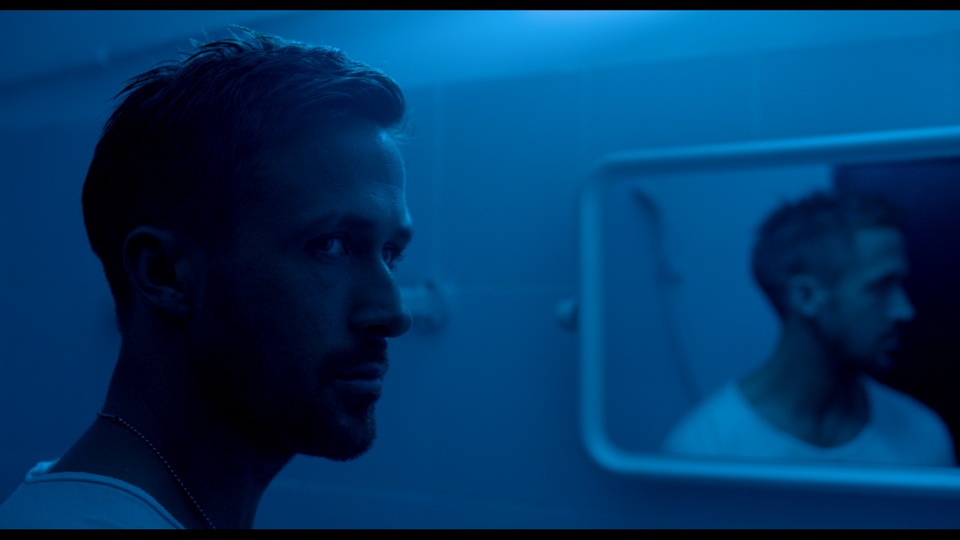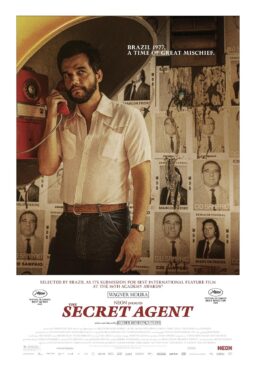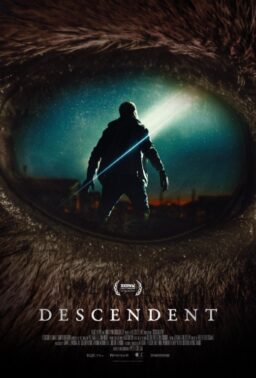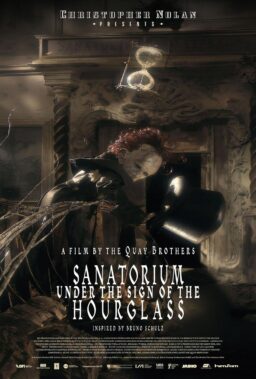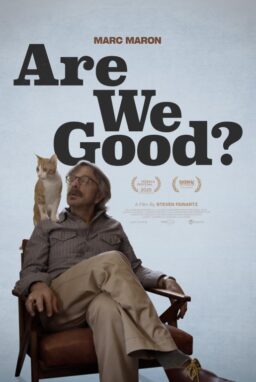Just as the competition for the Palme d’Or is a fight to the finish — like an Oscar race without the campaigning, as Steven Spielberg noted on the festival opening day — getting by here in Cannes can be a daily battle. Whether it’s a struggle for entrance to a screening, competition for an aisle seat, or just the race to cross the Croisette in the face of the gun-toting French national guard guys who act as traffic cops when red carpet scenes are imminent, there’s always an adversary.
Palais guards have the ultimate power, and all tote bags and purses are inspected each time anyone enters. It’s up to the caprice of the individual guard whether your bags get a cursory glance or the kind of search that may determine that your umbrella, iPad or hairbrush is a lethal weapon that needs to be checked. In the days before every electronic device incorporated a camera, cameras were forbidden in official screenings. I used to hide my little point-and-shoot in a fake-fur makeup bag so padded that the guards felt nothing but the squish.
An extra-early, extra-frantic rush for seats for the 8:30am press screening has always accompanied premieres by high-profile directors including, in recent years, Leos Carax and Abbas Kiarostami. This morning it was for Danish director Nicolas Winding Refn (“Drive,” “Pusher”) and his competition entry “Only God Forgives,” a castration fantasy dedicated to French/Chilean director Alejandro Jodorowsky (“El Topo,” “Santa Sangre”).
I’d be tempted to call “Only God Forgives” an unintentional laugh-riot if it weren’t so deadly dull. Jodorowsky’s bizarre plots, hallucinogenic imagery, and stylized dialogue have the force of a madman’s passion behind them. “Only God Forgives” is driven by the hubris of monumental pretension. Visually, the film is so static that it could be presented as a PowerPoint slide show.
Brothers Billy (Tom Burke) and Julian (Ryan Gosling) are working in Thailand as boxing promoters and drug dealers. Within the first few minutes of the story, Billy rapes and kills a 16-year-old prostitute, and is immediately offed by her father, the brothel owner. “I’m sure he had his reasons,” retorts the mother of the brothers (Kristin Scott Thomas), who shows up to collect the body of her favorite son, while upbraiding wimpy Julian for not killing Billy’s killer.
A retired Thai cop takes care of the brothel owner instead, chopping off his hand, a direct reference to Jodorowsky’s “Santa Sangre.” He continues to function as a dispenser of vigilante justice with a license to kill, slashing a man from stem to stern with his machete in one scene, digging out an eye and plunging a knife into a man’s brain in front of a nightclub full of customers in another. The press notes say that he represents “divine justice.” OK, whatever.

Big mama Crystal, with her abrasive manner and raspy voice, is quite a piece of work, depicted as a Barbie doll-gone-Cruella De Vil. She has the film’s most immortal line, one that that critics choked with laughter will still be quoting to each other years from now. Julian is joining his mother for dinner, and he bribes a prostitute to pose as his girlfriend. Asked what she does for a living, the young woman replies that she’s an entertainer. “And how many cocks can you entertain with that little cum-dumpster of yours?” asks Crystal, who proceeds to regale the two with an elegy to dead Billy’s penis.
“Only God Forgives” moves at a lethargic pace and features trance-like performances, especially by Gosling, who is such an impotent screen presence that he seems to be sleep-walking through his role. The color palette is limited, with much of the drama taking place in a red-lit brothel. Refn puts insistently thrumming music in almost every scene to give coloration and continuity to what is otherwise a very inert drama.
Oedipal issues are resolved in the end, with Crystal being visited by the divine retribution guy. Poor pussy-whipped Julian gets the last word, so to speak, with what is probably the most off-putting symbolic mother-penetration gesture ever put on film.
It was a relief to walk away from the aura of the red brothel and out into the press area of the Palais, where sunlight was pouring through the glass-paneled roof high above. I headed up several flights of white marble stairs to reach the Salle Buñuel, where “Muhammad Ali’s Greatest Fight,” by Stephen Frears (“The Queen,” “The Grifters”) was premiering out of competition.
“Muhammad Ali’s Greatest Fight” is about a conflict, but one that takes place in the Supreme Court of the United States rather than in a boxing ring. Boxer Cassius Clay announced his conversion to Islam and his name change to Muhammad Ali in 1964, shortly after winning his world championship. His career was short-circuited by his refusal to be inducted into the military on conscientious objector grounds and by his subsequent conviction. The legal challenges to the conviction dragged on for years, until the case reached the Supreme Court in 1971. This film is a fictionalized behind-the-scenes story of the battle among the nine justices.
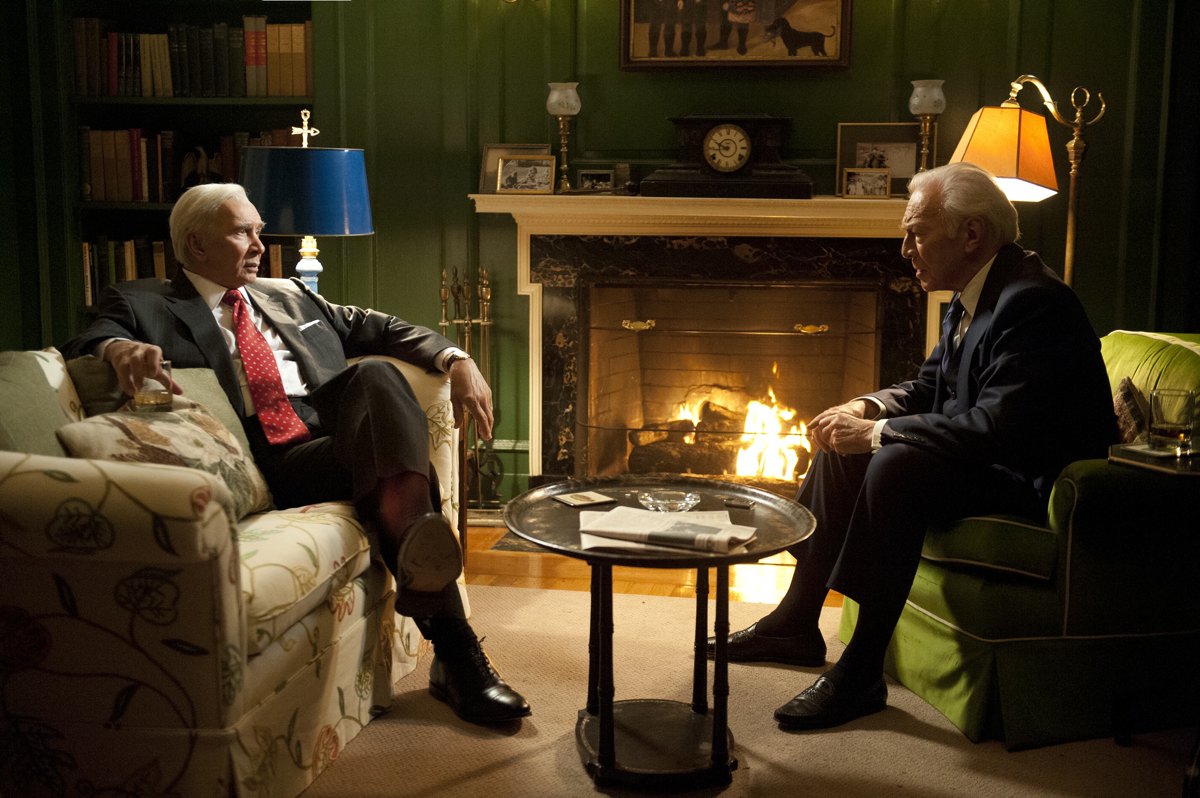
The film stars an impressive slate of veteran stage and screen actors, most notably Frank Langella as Chief Justice Warren Burger, Christopher Plummer as Justice John Marshall Harlan II, and Danny Glover as Justice Thurgood Marshall. Since the Marshall character recuses himself from the case early on, this is largely a drama that pits old-school seventy-ish white men against their young, ambitious, and somewhat more progressive white male clerks in hammering out the closely fought but definitive victory for Muhammad Ali.
The justices are portrayed as crusty men who are long entrenched as both friends and adversaries. Their noblesse oblige attitude and thoughtless racism and sexism are fully supported by the Washington establishment and by the culture at large. Burger and Harlan are patronizingly kind to their black servants, and Burger confides to Harlan at one point: “I’ve recommended that unemployed blacks be hired to work as gardeners at the Mall [the Washington Mall]; they have such a lovely sense of color.”
The clutch of law clerks who research and write the opinions of the court are seen as members of a unique boys’ club of highly competitive young men from Ivy League law schools, some of whom hold more progressive ideas on subjects including the rights of women and the Vietnam War. The film’s larger drama is crystallized in a showdown between law clerk Kevin Connolly (Benjamin Walker) and his boss Harlan, which the film uses to signal changing times to come, as throngs of protestors Connolly’s age storm the doors of the court building.
Muhammad Ali is represented in the film through news and interview footage of the period. Although there is often a visual disconnect between the quality of the old footage and the slick style of the fiction, Ali’s presence has a weight and gravity that keeps him centered in what is basically a white man’s courtroom drama. “You forget how smart he was,” commented one critic as we left the screening. It’s true: every cutaway to Ali leaves you wanting more of the man himself.
Incredibly, it began to rain again in Cannes around 5:00pm. Not just rain, but to pour down in icy torrents. The doors were scheduled to open at 6:00pm for the 6:30pm press screening of the three-hour-long French competition film “Blue Is the Warmest Color” by Abdellatif Kechiche (“Black Venus,” “The Secret of the Grain”). As almost always seems to happen every time it rains, there was a delay that kept hundreds of unhappy members of the press standing outside getting soaked. The guards inside wouldn’t even look at us. They closed the theater doors and vacated the lobby, leaving the wet crowd to heave and yell and whistle.
“Blue Is the Warmest Color” is a coming-of-age film in which the conflicts are the challenges of growing up and recognizing sexual orientation, finding love, and learning to live with the loss of love. Kechiche creates his story in the intimacy of the face. For much of the extended length of this film, his camera is quite literally in the faces of his actors. It’s a drama in which the flickering of eyes, a blink, or a twist of the mouth can say more than lines of dialogue.

The film takes Adèle (Adèle Exarchopoulos) from the age of fifteen, as a high school student just discovering sex, to her early twenties, now a primary school teacher, when her relationship with Emma (Léa Seydoux), the woman who has been her first love and her obsession, has run its course. Kechiche’s method of narration requires duration, and many of the key events in Adèle’s life play out in real time.
When she is a high school junior on a first date with a classmate, we see her in close-up being kissed in a movie theater, her open eyes sliding sideways in surprise, confusion and discomfort as the boy invades the space of her seat. After she meets slightly older art student Emma, the trajectory of their love is depicted through the relationship of their eyes and mouths, although Kechiche also emphasizes the intensity of the love through the most explicit sex scenes ever likely to be seen outside of a porno film.
Despite the detail, the director isn’t aiming for provocation, and the sex doesn’t add an especially carnal aspect to the film as a whole. It’s paradoxical that he can get so close yet create a distance between his characters and the audience. It has to do with the fact that the relationship between the women is a closed circle. We may be viewing their naked bodies at a distance equivalent to a foot away, but we aren’t there in the intimate sense.
By contrast, scenes of people eating, which Kechiche stages periodically, have a sumptuous, almost lewd quality. Adele eats at the family dinner table with the messy strands of spaghetti slopping down her chin. She takes enormous bites of a sandwich, and the camera is almost inside her mouth as she chews. The trajectory of life in “Blue Is the Warmest Color” is grounded in the normalcy of the ordinary, and Kechiche depicts love of any persuasion as the stuff of everyday.
